An undeniable fact is that between 2022 and 2023 Timisoara has eclipsed all other Romanian cultural centers, attracting the most active and well-known artists and curators. The Bucharest cultural scene has practically moved to Timișoara with notable projects, such as those of artists Irina Botea and Jon Dean, Suzana Dan, Călin Dan, Irina Gheorghe, Teodor Graur, Iosif Kiraly, Dan Mihălțianu, Sebastian Moldovan, Ioana Nemeș, Mircea Nicolae. Prominent curators such as Valentina Iancu, Iris Ordean, Magda Radu, Alina Șerban have also migrated here, alongside well-known or emerging artists from Cluj (Ciprian Mureșan, George Roșu, Flaviu Rogojan, Thea Lazăr, Adrian Ganea, Adrian Ghenie, who has been based in Berlin for some time), Iasi (Matei Bejenaru with an impressive installation of street photographs that populated the city center and later the cultural hub inside the Polytechnic University), Arad (kinema ikon hosted by Meta Spațiu or participating through its members in performances in the city) or Sibiu (Lia Perjovschi with the famous networks of the 1990s plus a strong and committed performance at Zona as well as Dan Perjovchi with a companion performance and his iconic illustrated tram). Well-known venues and associations such as Salonul de Proiecte, Institutul Prezentului, One World Romania, Fundația9, SAC, or emerging ones such as Marginal, Qolony, Copia Originală have contributed to the shaping of the Timișoara European Capital of Culture programme. Romanian artists with historical prestige such as Brauner, Brâncuși, Paul Neagu have been recovered and presented to the public. ArtEncounters Biennial, festivals such as Simultan or Zona, large exhibitions such as Performing 89. Stări de deziluzie or După SCULPTURĂ/ SCULPTURĂ După have succeeded in interconnecting the sound experiment with performance, film and visual arts, attracting a significant number of international practitioners and initiating artistic research well connected to the artistic developments of the European scene.
In this vibrant context, one of the most important achievements of the Timisoara European Capital of Culture Programme has been the exemplary way in which it has integrated the local scene, opening thematic or medial connections between Timisoara curatorial projects and those with a national and international spectrum. A significant contribution was made by Timisoara curators who initiated artistic events complementary to the Art Encounters biennial, such as Ileana Pintilie and Maria Orosanu-Telea, professors at the Faculty of Arts and experts in art theory and criticism, as well as a series of involved and active artistic associations and spaces such as Balamuc (Ana Kuhn), Contrasens (Dana Sarmeș), Indecis (Sergiu Sas and Mimi Ciora), Meta Spațiu (Mirela Stoeac-Vlăduți), Monotremu (Laura Borotea) and a whole constellation of artist-run spaces in the Faber perimeter such as Digital: Canvas (Marius Jurcă) or Lapsus (Alex Boca).
We therefore remark that both the international selections of the European Cultural Capital programme and the curatorial agenda of the Timisoara scene have activated the same current directions of artistic research such as the theme of postmedia affections, the posthumanist critique of the Anthropocene, the new ontologies of objects, the relationship of art with nature via technology, as well as imperatives of the experimental scene such as care, collaboration, inhabitation, the creation of human and non-human connections.
In the Hiperestezia exhibition of the Avantpost group, curated by Maria Orosanu-Telea, we identify a keen focus on intermedial experimentation as well as on playing with the senses and spatiality, associated with a real appetite for artistic research. For example, Miki Velciov, Aura Bălănescu and Marius Jurcă (13m10j), author of an interactive installation in which spectators can compose cosmic and musical harmonies, practically building their own galaxy on the quiet sky of the Bastion ceiling, carry out captivating studies on the act of seeing, reflected and mediated by mirrors and digital technology. It is worth mentioning that the same Marius Jurcă also initiated the exhibition poster, in my opinion one of the most suggestive posters of the European Capital of Culture: a fluffy, stellar H that invokes the Greek roots of the term aesthesis, which links the faculty of sensation with the possibility of transcending to the cosmos of intelligible harmonies.
Another work that opens new avenues of communication towards a range of internationally relevant themes, remarkable both conceptually and artistically, is (Hyper)objects by Liliana Mercioiu-Popa. The installation, in which a wide range of everyday utensils have been taken out of their usual environment and completely covered in reflective, silver paint, brings back phenomenological debates on the subject of inhabitation and the (in)authentic work. I am referring here mainly to the difference between things valued in themselves, for themselves, and those exploited on the basis of some limited functionality. Our predilection towards exploiting and reducing things to trivial functional pursuits is revealed by the Heideggerian observation that the only times when an everyday object really stands out are when it proves broken or untraceable, thus unable to perform its function. In this sense, Liliana Mercioiu-Popa’s silver objects, like an unsupported Heideggerian “utensil”, become paradoxically visible, capable of bringing out of hiding essential properties of man and his deficient relationship with things in the age of Technology.
It is interesting to observe how these featured objects, relocated on the exhibition stage and freed from their trivial functional purpose, open up subtle trajectories of communication with other works, such as the sublime yet useless paper stones built at the end of the world by the characters in Sebastian Moldovan’s installation, exhibited at Art Encounters. Interesting connections can be made further, in the case of both projects, with the new ontologies of objects and the reconsideration of the nonhuman specific to the posthumanist paradigm. In the case of the (Hyper)objects installation, whose name itself refers to Timoty Morton’s philosophy, the possibility of reflecting oneself in the mirror objects, thanks to the reflective silver surface, invokes their necessary status as agents, reminding us that man defines himself only in the world, through his places and things, that we are the landscapes and houses we inhabit, we are the pencils, phones and brushes we wield. We are thus warned that the reduction of things and nature to trivial functionality is seconded by an irretrievable reduction of the individual to the status of a disposable and available (human) resource.
Last but not least, the most distinctive project of the Hiperestezia exhibition, which connects the Bastion space with an unusual location, the post office in Timișoara, belongs to the same valuable artist of the Timișoara scene. Bearing a title inspired by Hannah Arendt, Without Wandering There Would be no History, it proposes an investigation of landscape as an artistic species that can bring out the human relationship with nature in a particular historical period. In short, Liliana Mercioiu-Popa repaints famous landscapes of art history in shades of grey, eliminating human, animal or supernatural presences and replacing them with red, yellow or turquoise dots. The paintings, which are displayed in the post office space, are accompanied by flower planters containing soil, rocks and natural plants. The evolution of the landscape from a sublime object of contemplation and the main character of the painting to a simple decorative element, auxiliary to the human presence, is thus analyzed from novel, non-anthropocentric positions.
It should be emphasized that a similar phenomenological interest in the body, the act of seeing and the posthumanist questioning of the relationship between man and nature via technology, also marks the Art Encounters curatorial program, where I would mention, in particular, the paradoxically minute 3D sculpted replica of the sublime Piz Linard mountain by Karin Sander, the butterflies of Carlos Amorales, Zheng Bo’s ferns and a series of ecoart works by Floriama Cândea, Ioana Cârlig, Giulia Crețulescu, Sebastian Moldovan.
It is important to note that the same themes were on the agenda of the curator, professor and specialist in art history and theory Ileana Pintilie as early as 2022. We note with admiration, in this new case, an organic and relational development of research focused on the triad man – art – nature. If in 2022 Ileana Pintilie organized at Universitatea de Vest a large international conference titled Nature Arts-Interconnections, with the participation of a wide academic community of artists and theorists, in 2023 the same Ileana Pintilie, this time from the position of curator, launched a marathon exhibition called Expanded Nature, held in no less than four spaces: the newly opened Museum of Water, the Attic Gallery of the Faculty of Arts, Gallery 28 and Meta Spațiu.
A relevant detail for Expanded Nature is that the nucleus of artists from which the exhibition was structured was made up of the conference participants, including Dana Catona, Ciprian Ciuclea, Liliana Mercioiu Popa, Marilena Preda Sânc, Sașa-Liviu Stoianovici etc. They were joined by other important artists concerned with new definitions and categories of nature and the natural, such as Geta Brătescu, Ion Grigorescu, Constantin Flondor, Iosif Kiraly, Dan Perjovschi, Matei Bejenaru, Anca Benera and Arnold Estefan.
In line with other remarkable events of the European Cultural Capital, the exhibition has undertaken an inter/multi-medial way of working, with the mention that in this case “intermediality” has been treated as a defining feature of Romanian contemporary art. We are dealing with a phenomenon that Ileana Pintilie knows in depth, namely the gradual dissociation of the local art scene from the coordinates of modern art and the formation of a new orientation through the sedimentation of successive experimental waves that, since the 1960s, have investigated essential contemporary themes such as utopias of space or nature as a lesson in form and functionality through drawing, photography and film, and after the 1990s have probed with the same intermedial means the identity crisis of a Romania split between a communist past and an uncertain European future. We recall that these “intermediate waves” included, in turn, the Sigma Group, Ion Grigorescu, Geta Brătescu and later their direct and indirect successors: Iosif Kiraly, Dan Perjovschi, Liliana Mercioiu Popa, Matei Bejenaru, Ciprian Ciuclea. Witness of this process and responsible for recording recent history (a task she has accomplished with great success by editing the two important publications Acționismul în România and Zona), Ileana Pintilie has succeeded in integrating important performances, photography, sound, neo-constructivist experiment in the area of graphics and installation in the Expanded Nature exhibition.
In this dense tapestry of ideas, we recognize the diffuse influence of the Sigma group, their interest in architecture, space and the study and preservation of nature. Looking at Liliana Mercioiu’s drawing and installation as well as Iosif Kiraly’s photographic re-constructions, exhibited at Meta-Spațiu, we notice that there is no recontextualization or the existence of common elements, but rather an air of familiarity. Constructivist accents are also apparent in the work of the younger Ciprian Ciuclea whose installations, embedded in perfectly constructed natural wood rectangles, fuse with an architectural perspective on photography. Also, the series of silver photographs presented at the Museum of Water in the context of Expanded Nature present the dynamics of the Băneasa forest, the former Vlăsiei forest, in its struggle with the expansion of Bucharest.
As for the selection of projects at the Museum of Water, an experimentalism based both on materiality and space can be found in Sașa-Liviu Stoianovici’s sound sculpture involving bees and in Bogdan Rață’s sculpture, totally immersed in the natural habitat. In this second case, we are talking about two processual works installed in the ponds of the Museum of Water’s courtyard, two human silhouettes made of resin that moss, tadpoles, and frogs can slowly invade, returning them to nature. The first is a hybrid flooded body which holds the water like a clam shell, recalling the aquatic composition of the human body and the ontological kinship of the human with cosmic elements. The second represents a decentered, headless body or a dress dissolving under the pressure of rocks, a possible study after Millais’s Ophelia, reminding us of the privileged position of women as well as nature in the art of the Romantic period, but also of the 19th century reductionist interpretations of the so-called flower-woman (see the harshness of Kierkegaard’s adjectives in The Seducer’s Journal – woman is beautiful but spiritless, like botanical nature).
A project that tackles the same theme of the vegetal, only this time intertwined with the artificial, is Matei Bejenaru’s series of large-scale photographs Modele, exhibited at Meta Spațiu. It portrays a fascinating array of simulacrum floras, based on a set of botanical models imported from the GDR in the 1970s and 1980s, a set recovered by the artist from a laboratory at the Faculty of Biology in Iasi. In this sense, the exhibition reveals a series of constantly recurring features characteristic of the artist’s conceptual practice, which places him in close proximity to the bionic research of the Sigma group : a readiness to research and work with archives, a structuralist interest in investigating the machine eye, contrasted with the organic need to launch investigations on the theme of qualitative multiplicity, of durational time that cannot be measured in seconds, of affective spatiality that is not quantified in meters but in feeling and color.
In this context, we note that Matei Bejenaru’s flowers can be seen both as a sample of archival thought and experience (see the link between death and the archive, pointed out by Derrida in Archive Fever) and as a manifesto of the hybridization of the plant with the animal and the human, but also with the machinic. Magnified and observed from unexpected angles, the voluptuous petals, the flesh-coloured pink corollas, the calyxes oozing with sap and the sanguine pistils thus invoke human or animal organs but also menacing mechanisms, sublime machine-like flowers. We encounter in each of these immense cyborg-flowers a new kind of sublime that borrows its frightening mechanism from the old Kantian sublime, the dynamic sublime of nature. What is invoked here, however, is not the plant’s gracefulness but rather its strength.
Last but not least, Sigma’s phenomenological interest in nature, architecture and working with space can be seen in Liliana Mercioiu-Popa’s installation, Con(-)centric Spatialities, exhibited at Meta-Spațiu, both in the gallery and in the outdoor courtyard. It consists of a series of wooden poles arranged in a circular pattern, on which fossils, plants, delicate insects and pages from biology textbooks are engraved using a pollution-free laser technique. Arranged in the garden, on the grass, in the sun, in the wind, they trace and unite territories, build trails that invite the viewer to walk but also to take a lesson in physis (a term used by the Greeks to describe the spontaneous emergence of the self as well as the hiddenness, the mystery of the natural). Seen up close, the pillars seem to form an archive, a library of nature in nature, reminiscent of the sublime installation built by Roni Horn from Icelandic glacier water: The Library of Water. Seen from above, the same pillars form two circles, corresponding to the micro- and macro-cosmos, three of them penetrating the very built space of the gallery. This non-Euclidean geometry, based on the circle and natural forms, brings man face to face with the sublime elements of nature, while the low frequency of engravings treating the human individual (only two of the pillars bear a few references to Trajan’s column and the Renaissance drawings of the artist-medic Robert Flud, who still related the golden ratio to the human body) suggests a posthuman attachment to extended and empowered nature.
Faced with the threats of the new geological era of the Anthropocene, with the death of nature in and for itself, this message infuses the entire Expanded Nature exhibition, an approach that advocates a reconsideration of life and a critique of anthropocentrism. We note the subtle analysis of the new aesthetic categories of the vegetal or temporal sublime, the determination with which curator Ileana Pintilie replaces the tributary perspective of human finitude with one of geological eternity and the refined emphasis given to the elements of nature – water, air, fire, earth – interpreted from eco-phenomenological positions in the direction of the “non-possessable that envelops or contains without being contained or enveloped.” (Levinas).
* This journalistic material was produced with the support of an Energie! Creative Grant awarded by the Municipality of Timișoara, through the Centre for Projects, within the Power Station component of the National Cultural Program “Timișoara – European Capital of Culture in the year 2023”.
The material does not necessarily represent the position of the Centre for Projects and the latter is not responsible for its content or how it may be used.
POSTED BY
Raluca Oancea
Raluca Oancea (Nestor), member of International Association of Art Critics (AICA) and European Network for Cinema and Media Studies (NECS), is a lecturer at The National University of Arts in Buchares...
www.Dplatform.ro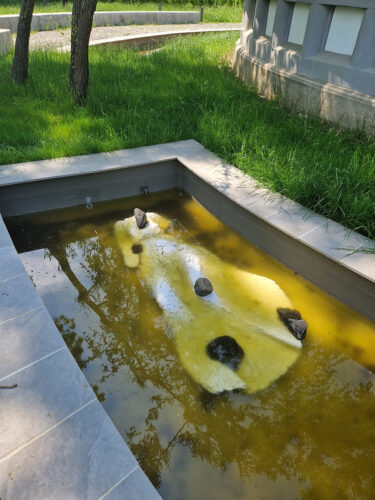
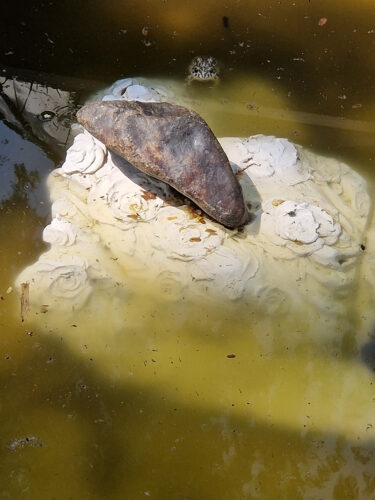
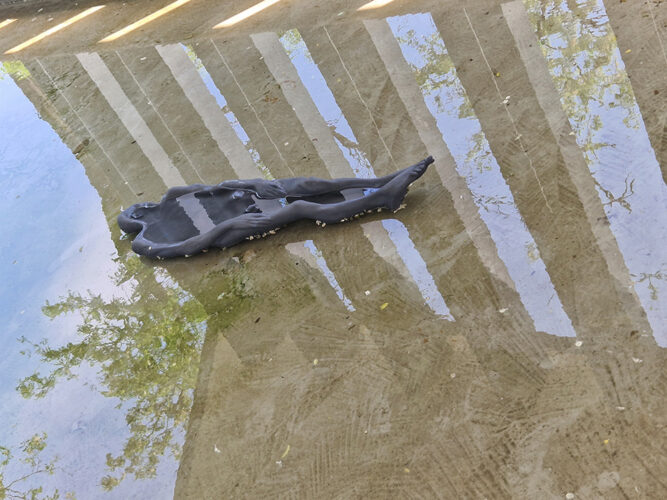
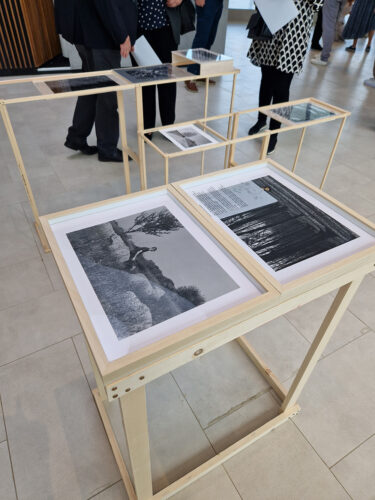
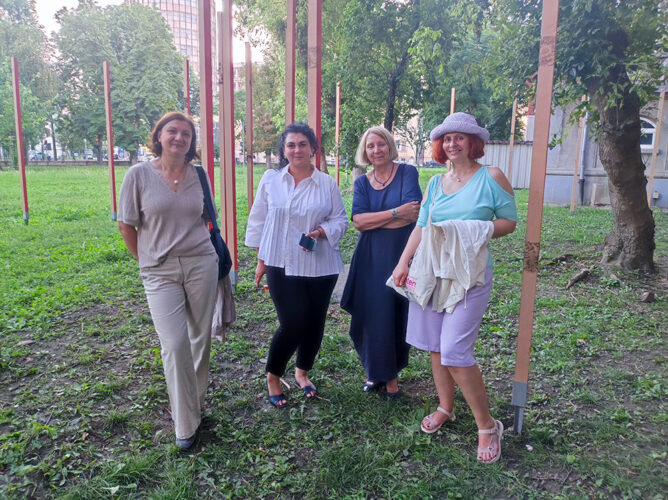
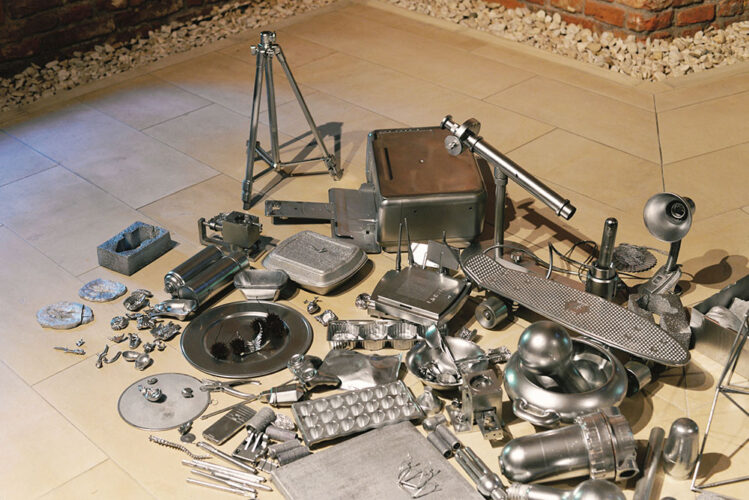
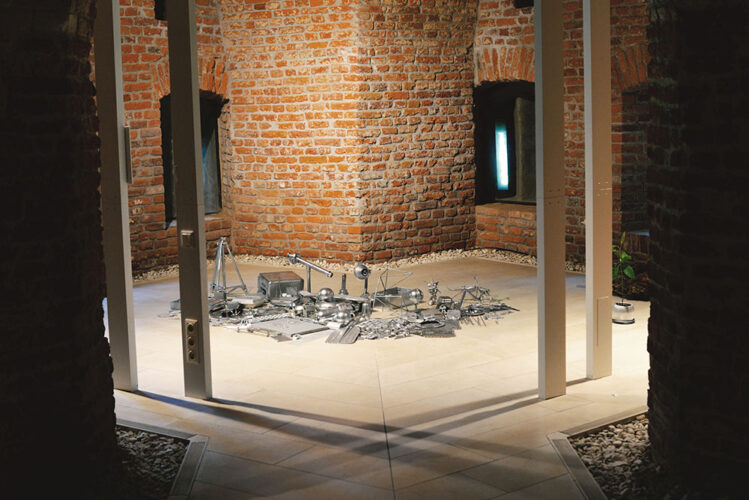
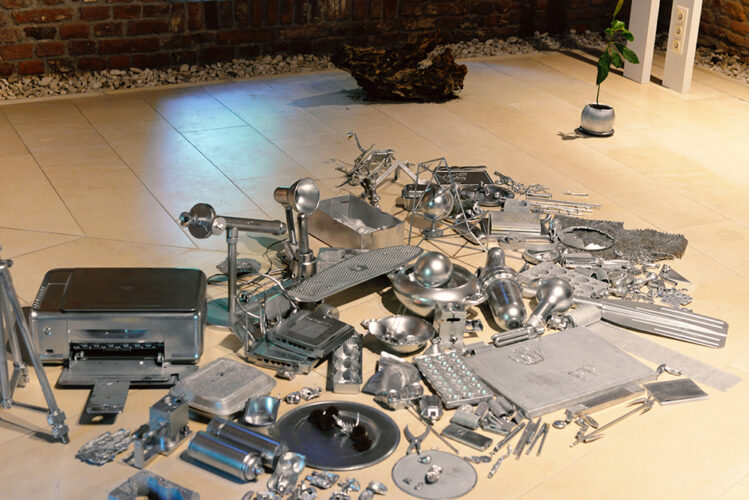
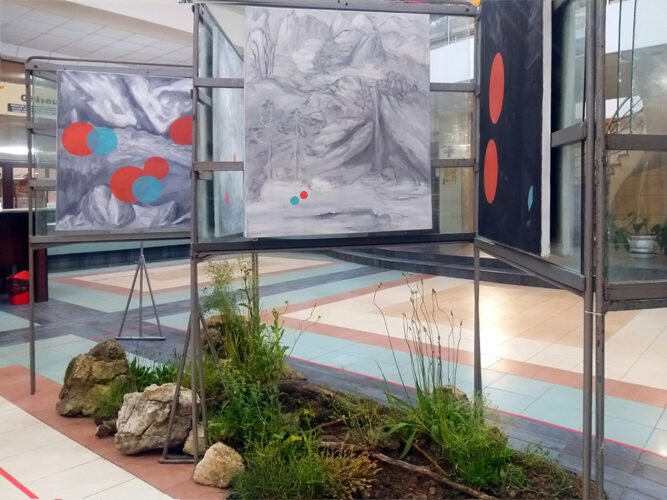
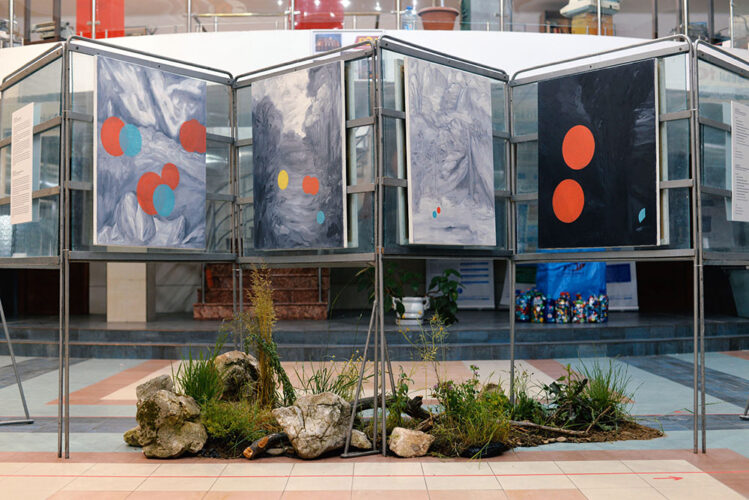
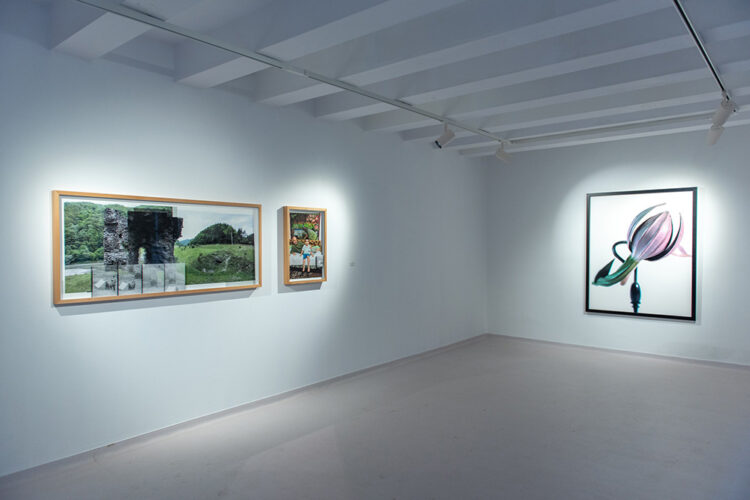
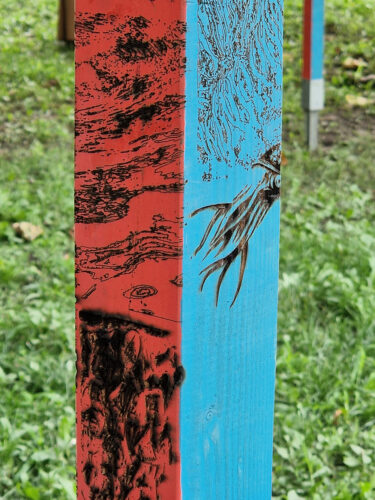
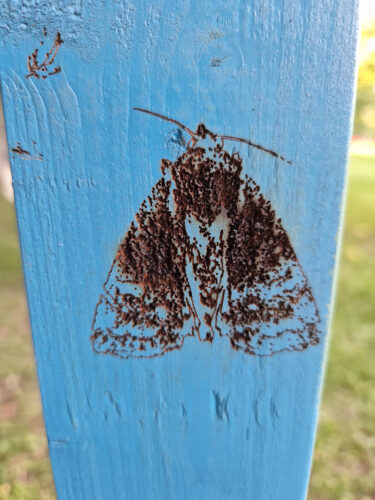
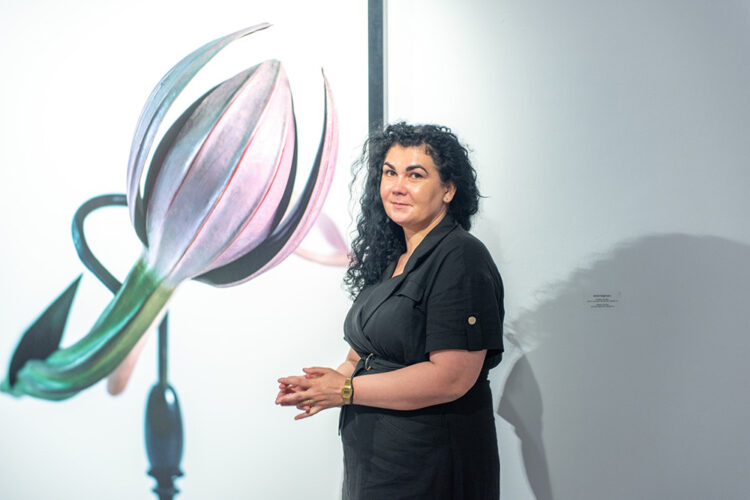
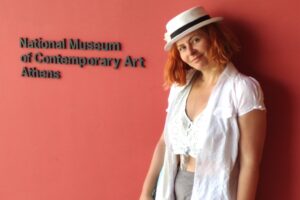
Comments are closed here.